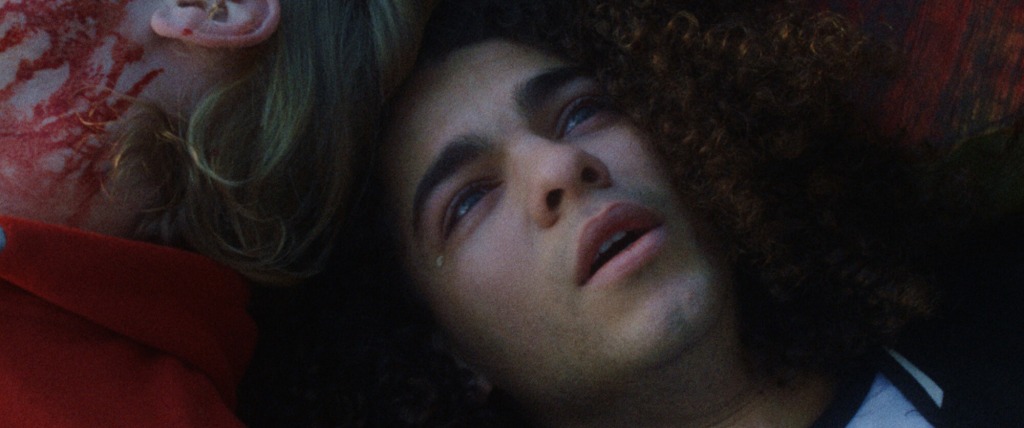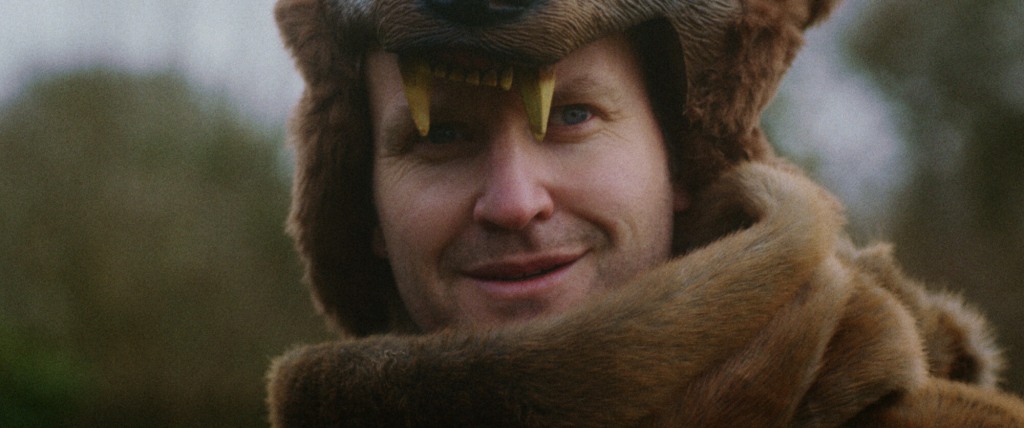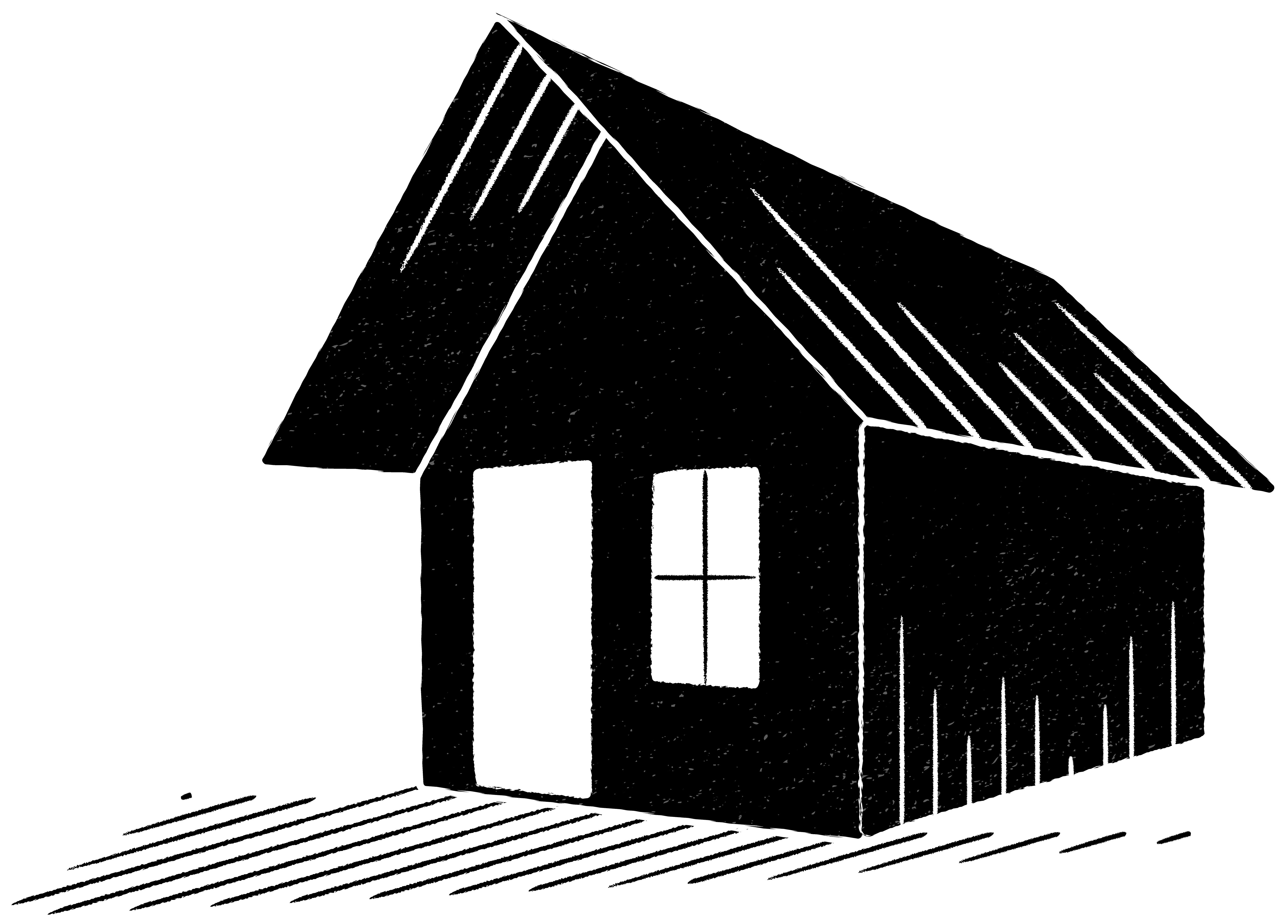If you go down to the woods today, you’re sure of a big surprise. It’s those famous words that provide the crux for Victor De Almeida’s The Bear, the story of a group of young adults who decide to take a camping trip in the woods before being confronted by a monstrous entity. Almeida’s film is a gripping take on the slasher with strong performances from its central cast and fluid cinematography that captures the simmering dread. Twelve Cabins is stoked to premiere The Bear online today, and to feature a conversation with Almeida below on the execution of his toughest shoot to date.
Where did the concept for The Bear come from?
This is a multi-layered answer because as a writer I never really think one thing inspires a story, when you delve deeper its usually an amalgamation of things. But in short; I have always had this idea of re-adapting fairytales and my favourite is Goldilocks and the Three Bears, in late 2015 I toyed with the idea and as I completed the script for my first film Cain, I started writing The Bear. I wanted it to be dark but without losing that fantastical aspect, so I started to look at American Werewolf in London and the original Texas Chainsaw Massacre to further help me develop the script.
How did you find production, what challenges did you face when shooting in the forest?
Production was tough! I always tell everyone that for most of us, going from what we had all done up until that point to The Bear was like going from Little Miss Sunshine to The Avengers. It still remains the toughest and most ambitious production I have made. I think there was 40 people. cast and crew combined, across five days and two locations; London and Surrey. We shot the film in January which is potentially the coldest month of the year. We actually had a set-back on day one, which meant that everything we shot in the forest could not be used. So all the forest scenes you see in the final cut are from just one day’s work. In a way, it made us all much more determined to complete the project and the following four days were relatively good with the typical difficulties of film production.

How much of dialogue is ad libbed and how much was scripted? There’s a great sense of camaraderie amongst the group and the indoor scenes feel really lively which means the tension cuts like a knife.
Very early on in the process I understood that with that many characters I would probably have to not be so precious about the dialogue, so I told the actors to improvise wherever they felt appropriate. That being said, I think there are very few parts where things are not scripted. The argument in the forest was a huge nine-minute, largely improvised take which none of the editors thanked me for.
We were really lucky in that the actors genuinely got along and I tried to make them understand that it was an ensemble piece and that there wasn’t one lead with a supporting cast. They were all incredible actors who understood the ambition of the project too. We were all humbled by their passion even when they had to be out in a cold, dark forest for twelve hours!
How did you work with each of your actors to established their characters? You really get sense of who each of these people are despite it being a large ensemble cast.
Funnily enough, we were advised by quite a few people to cut down the size of the cast to five or four because they felt it would be difficult to establish their characters in short film format. I was always completely against the idea of reducing the number of characters and felt that we could be successful at having so many actors in a short film by talking to the actors about their characters in depth. So, for example, we spoke about the idea of an openly gay couple in the 80s during the HIV pandemic and an interracial one at that and we played with the idea that maybe not every character with the group of friends was comfortable with that. I also got the actors to fill in a Proust Questionnaire. This was an exercise I learnt during my degree by where you ask yourself a set of questions about the characters you are writing to get to know them at a deeper level. Lastly, myself and the cinematographer wanted to try and frame them all within a shot as much as possible, this would give them the opportunity to add bits to their performance, whether it was how they stood as opposed to another character or how they interacted with one of the another. Even if they weren’t actively saying any audible dialogue I thought this would help the audience get to know the characters.

Who was your cinematographer? There’s a strong sense of visual language in The Bear and it looks great. What aspects of the camerawork did you both discuss when it came to shooting?
The wizard, I call him or the new Chivo! Although I don’t like to compare so instead I say he will be the new Korsshan Schlauer. When we first discussed The Bear, we connected instantly I loved the passion he brought and just his excitement to get it done. I’d like to think that I am the sort of director that gives a cinematographer room to be as creative as possible. So, the only brief I gave him was, I wanted to get as close to the feel of Birdman and The Revenant as our budget would allow. I think we pushed each other a lot creatively and when things weren’t going as planned we adapted on set. I remember one moment in particular when we were trying to think of all the set ups left in three different scenes, we looked at each other and almost simultaneously said, “let’s just do these three scenes in one shot.” I remember telling the actors what we were going to do and their faces of surprise but I guess they were also inspired by our ambition.
Will you be returning to the horror genre again?
I have directed one other short horror since The Bear which I would be more than happy to share with you guys. It was my second collaboration with Korsshan and co-produced with Dario Bocchini whose directorial debut you featured a few months back. I actually have this idea of creating an anthology of short horror films inspired by fairytales and have just finished writing my adaptation of Bluebeard, which is more ambitious in scope than The Bear, we just need to get it funded, that’s always the most difficult part but horror has my heart and soul, so I will be back!
The Bear was programmed by the Twelve Cabins team after being sent through our submissions route on FilmFreeway. If you’d like to see your film on our pages, submit here.
